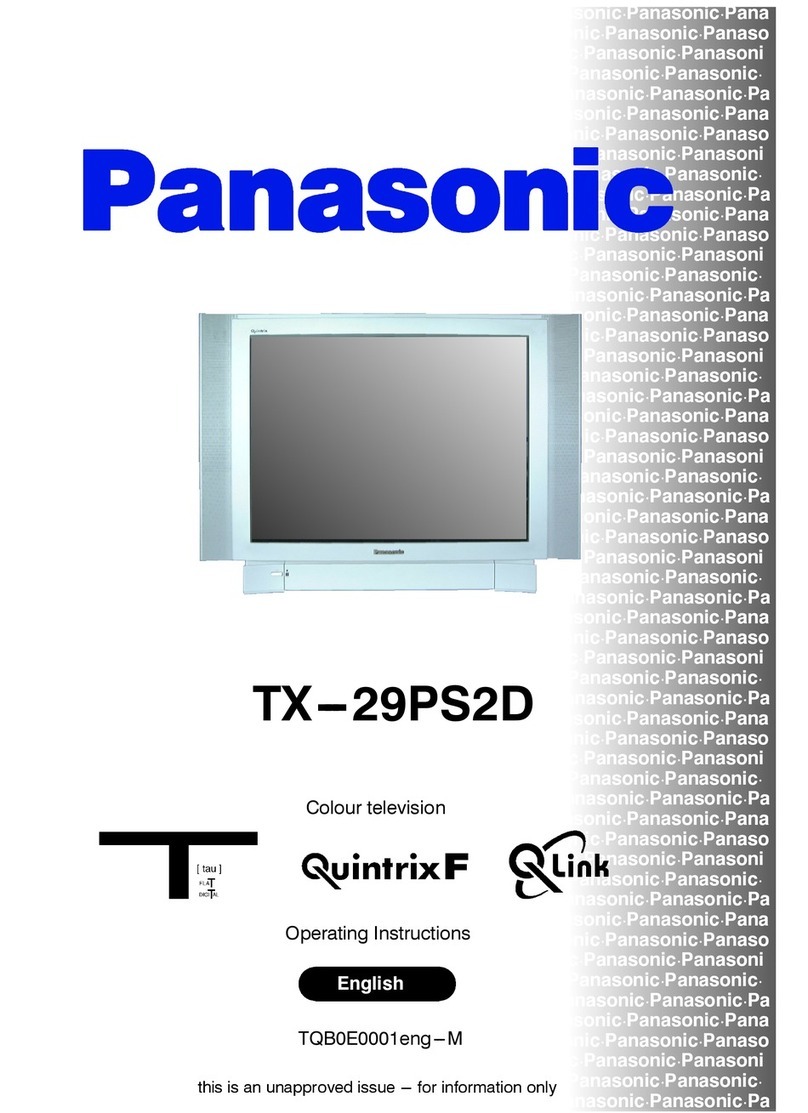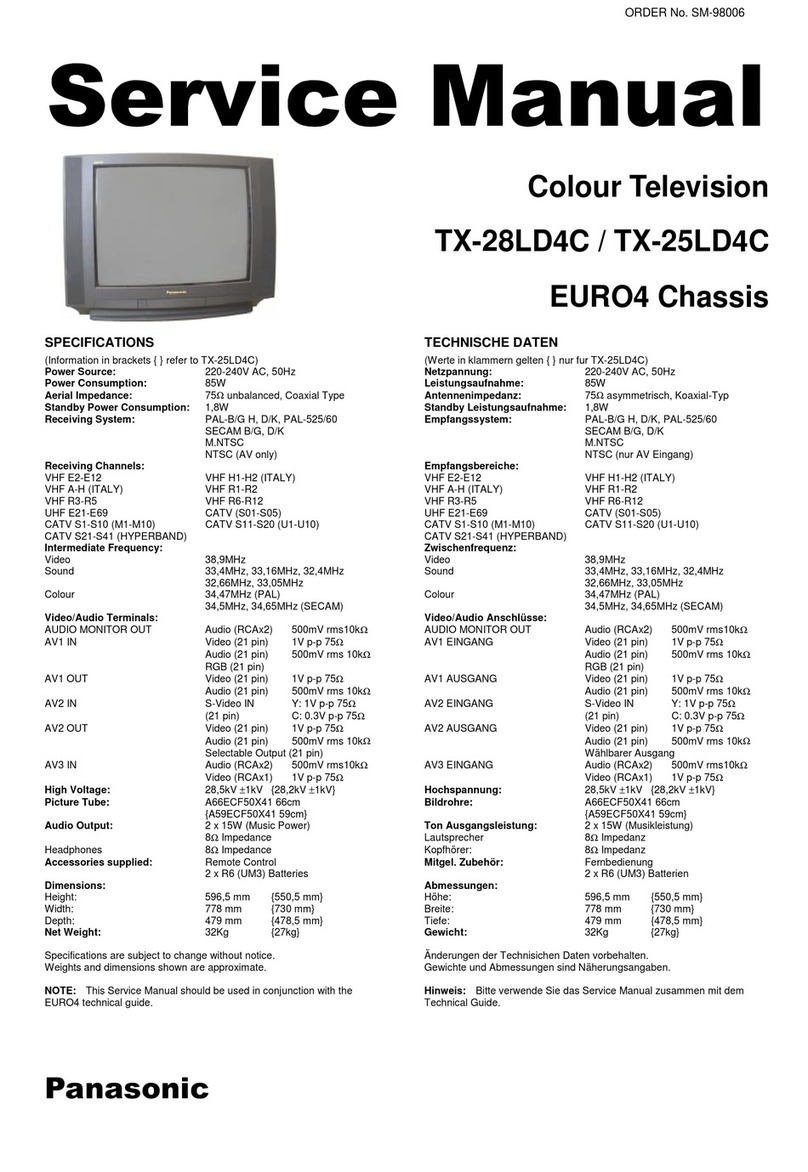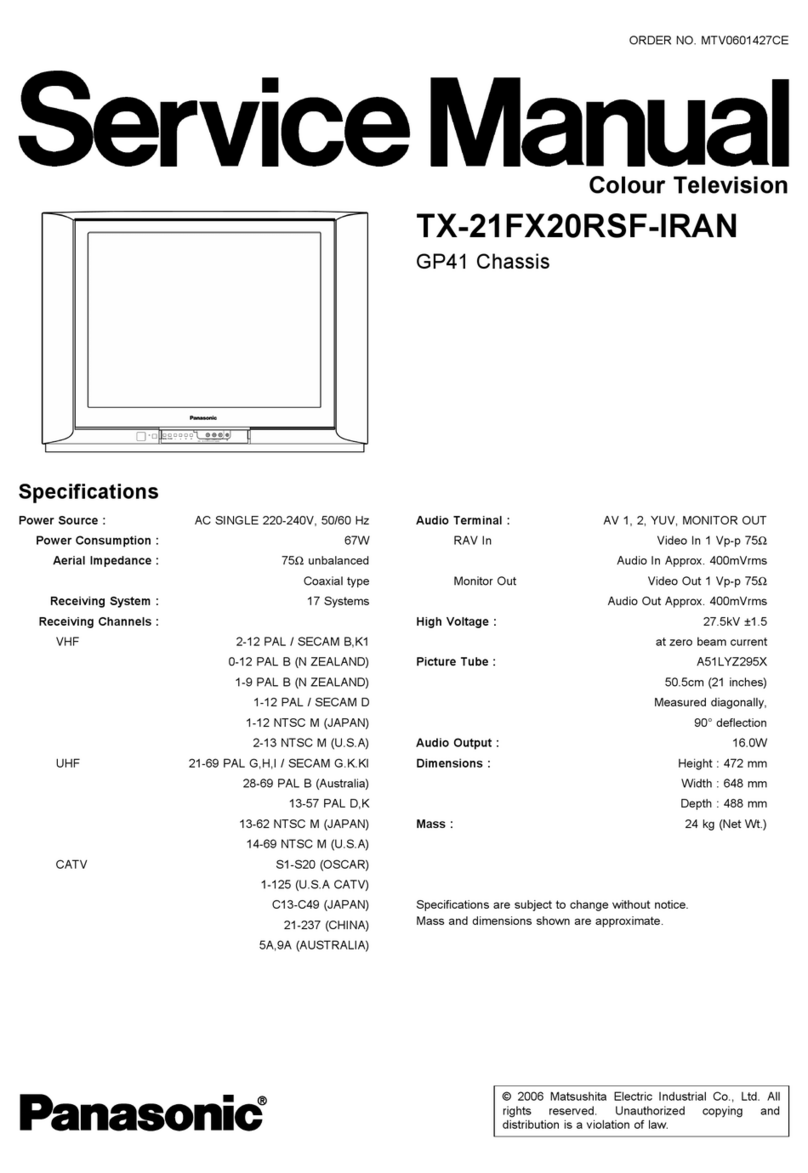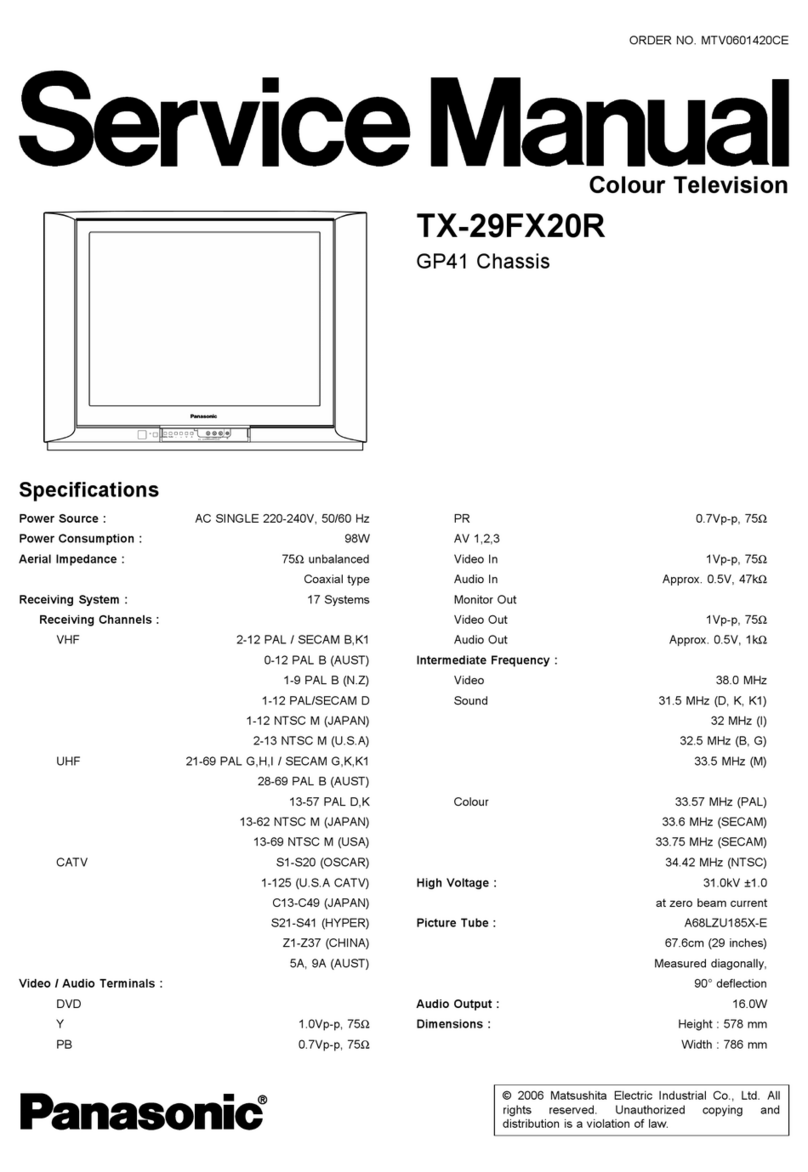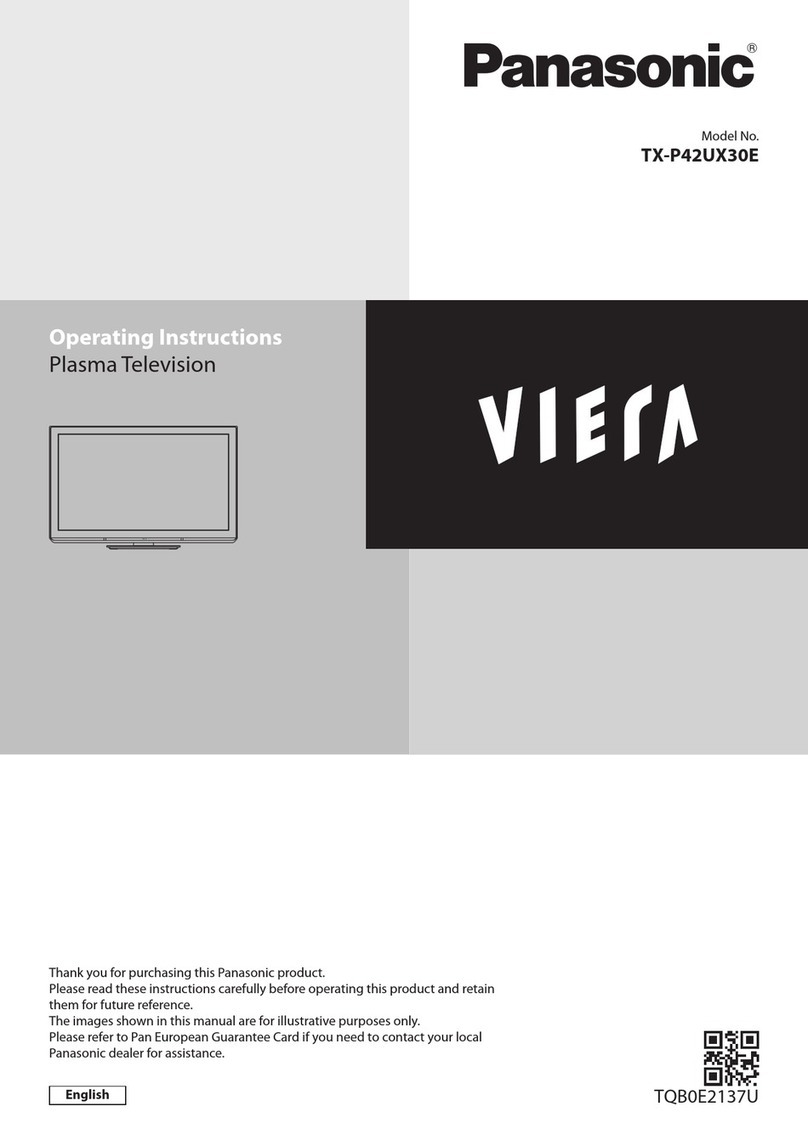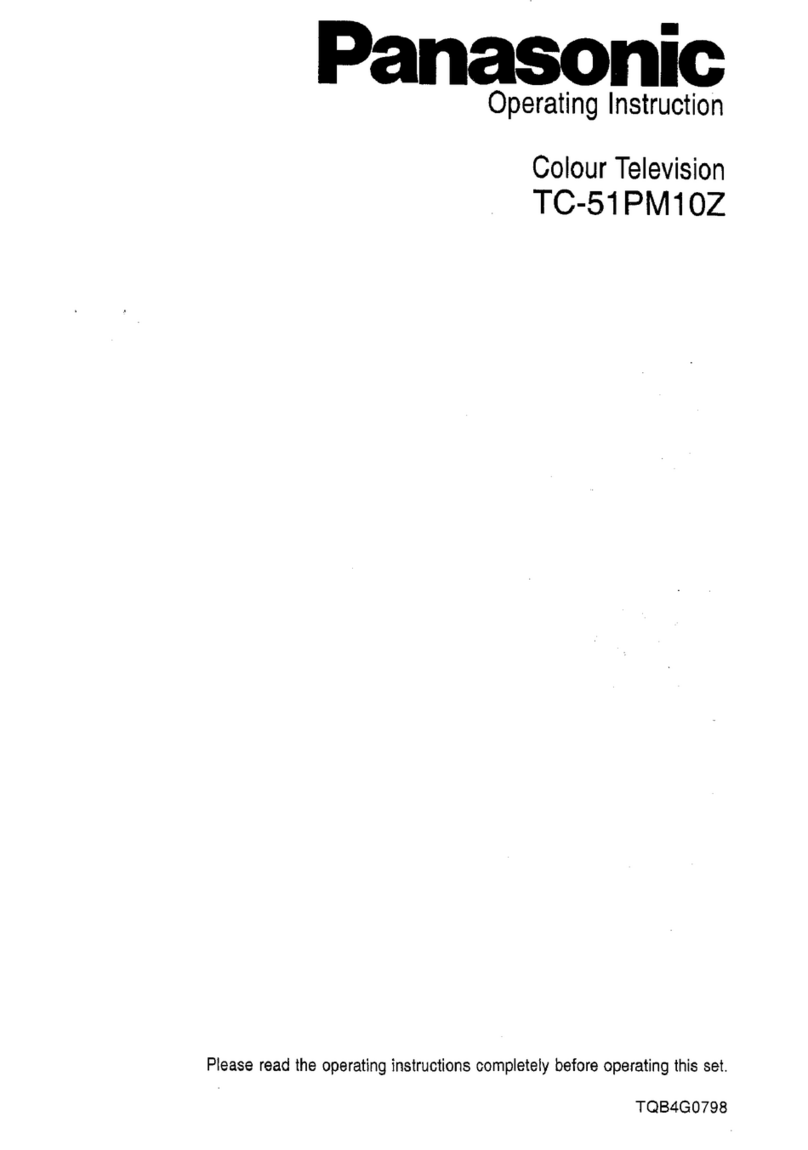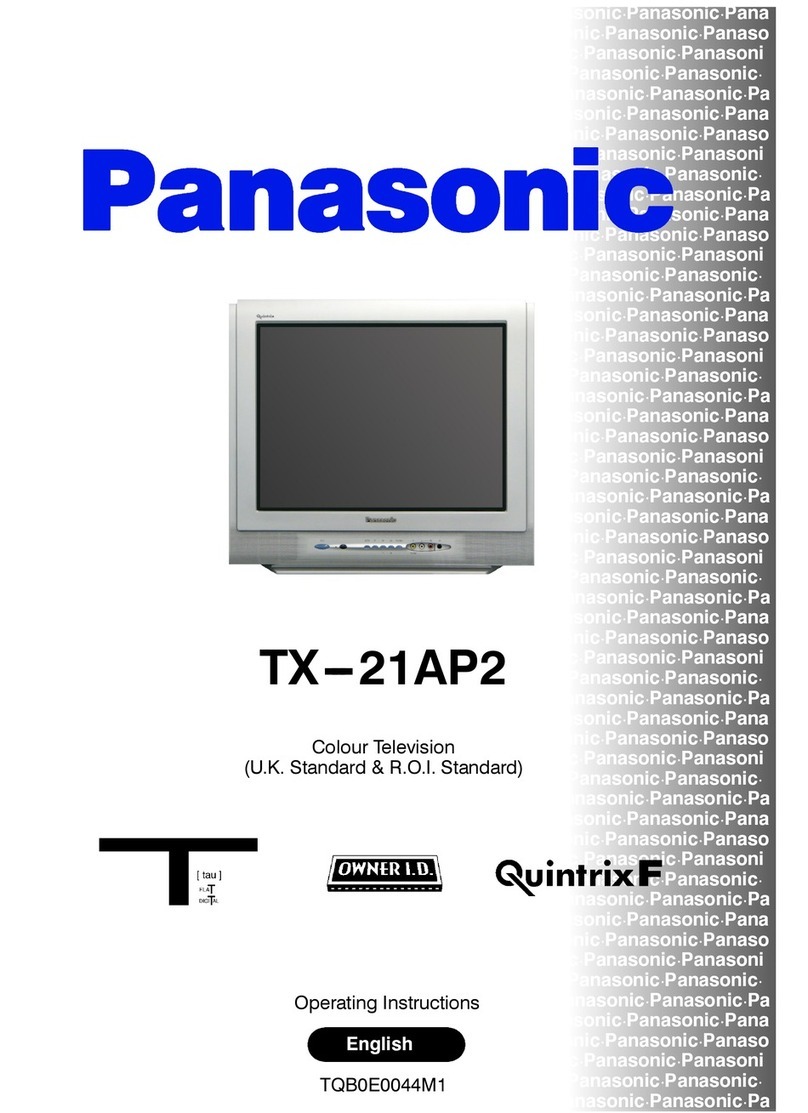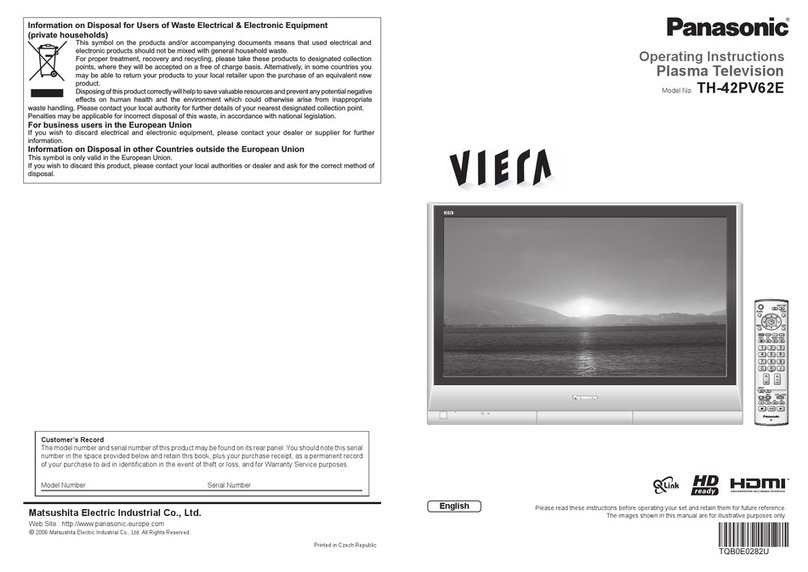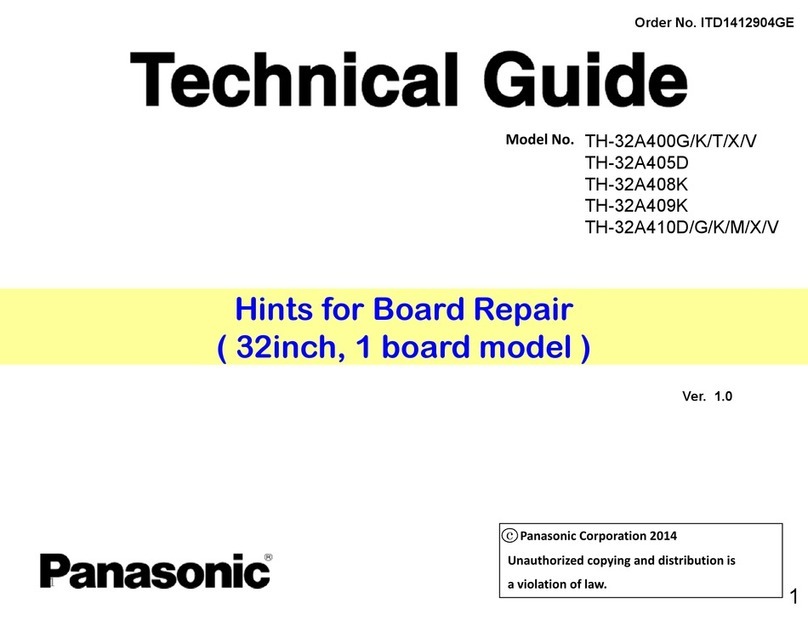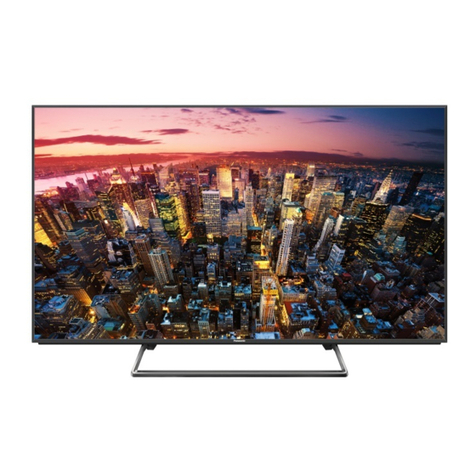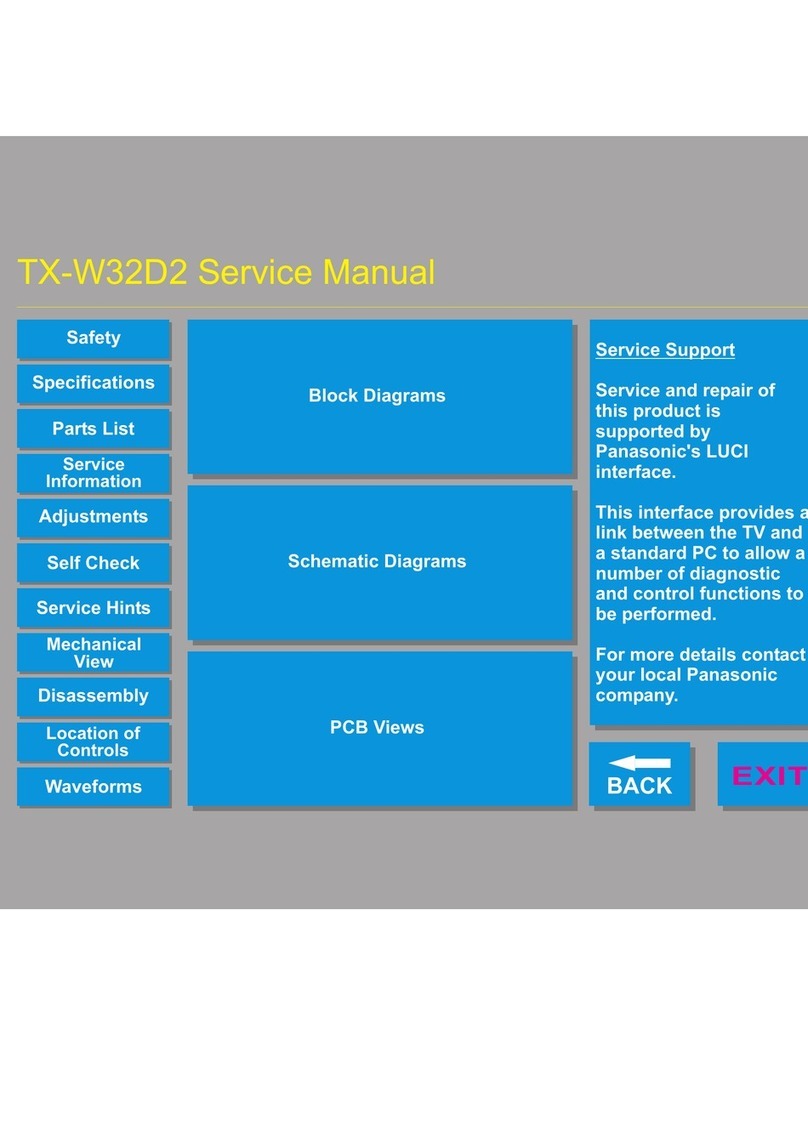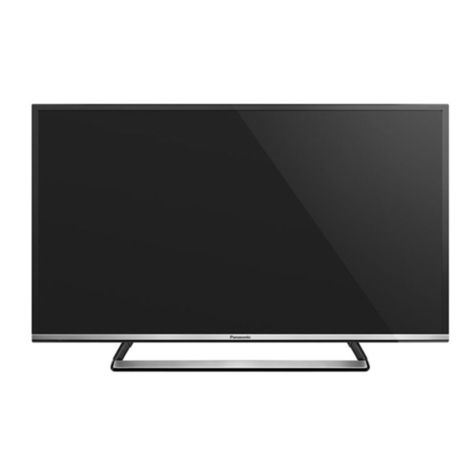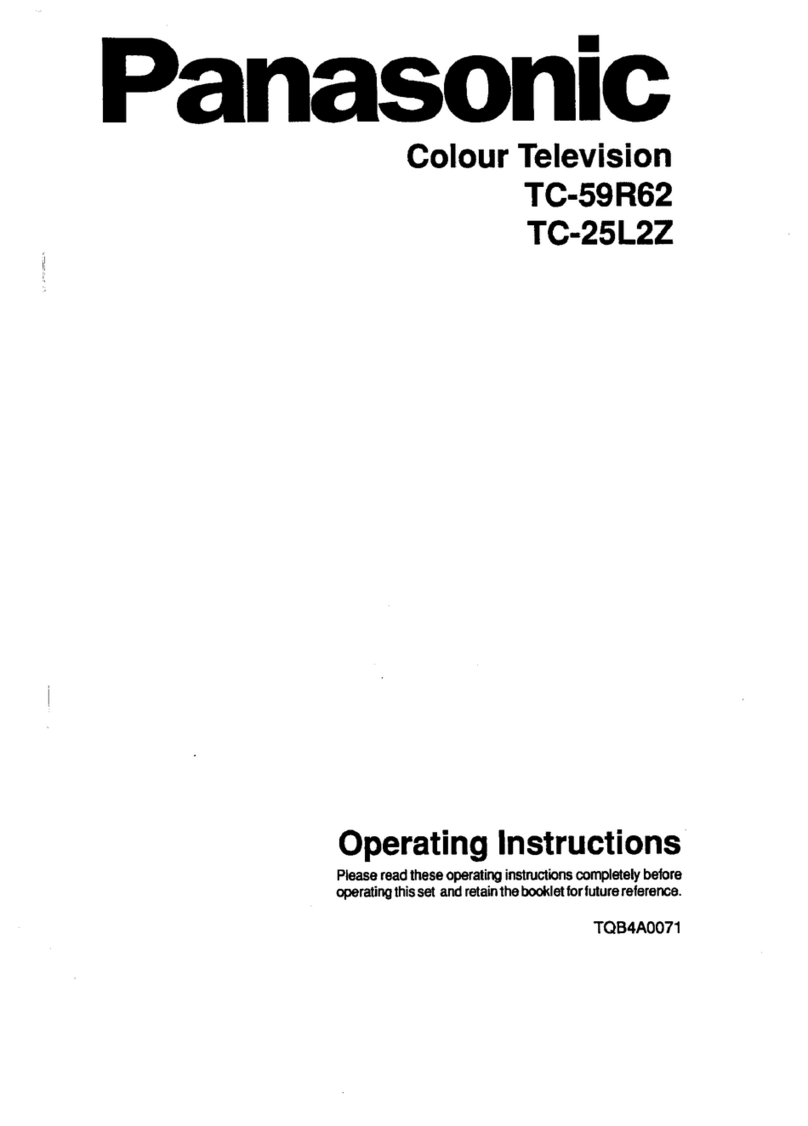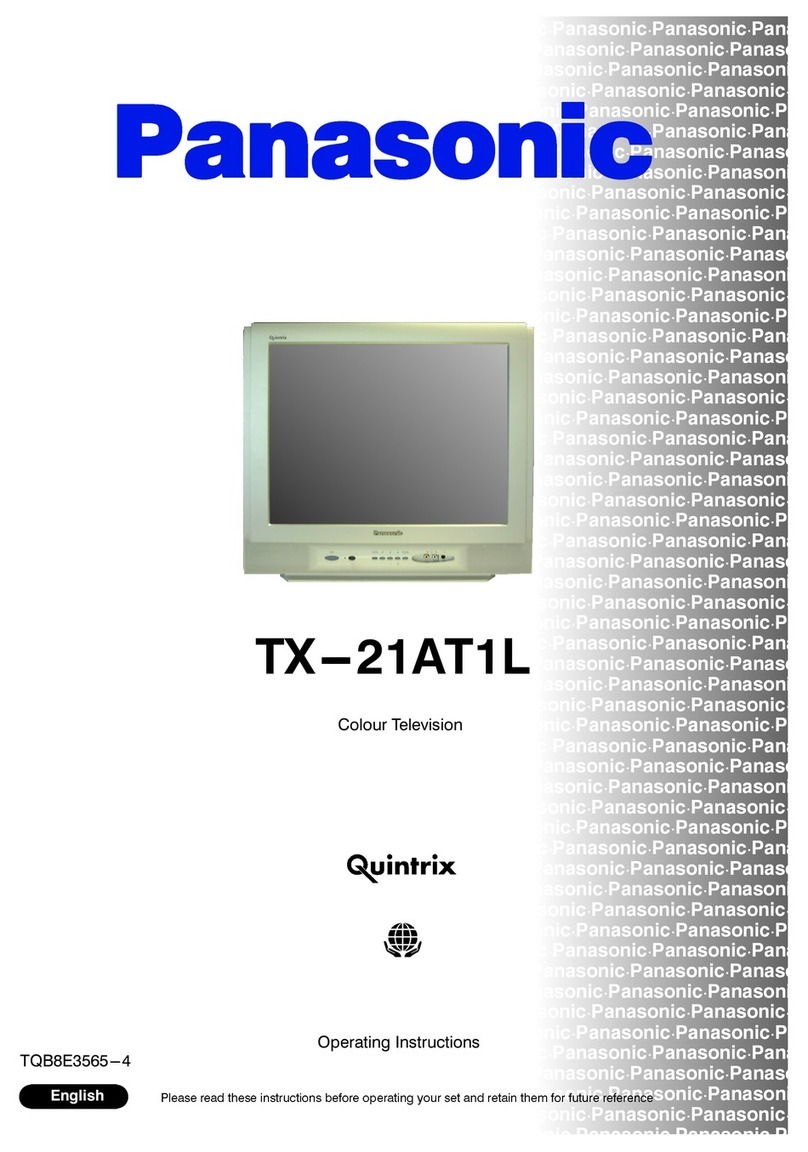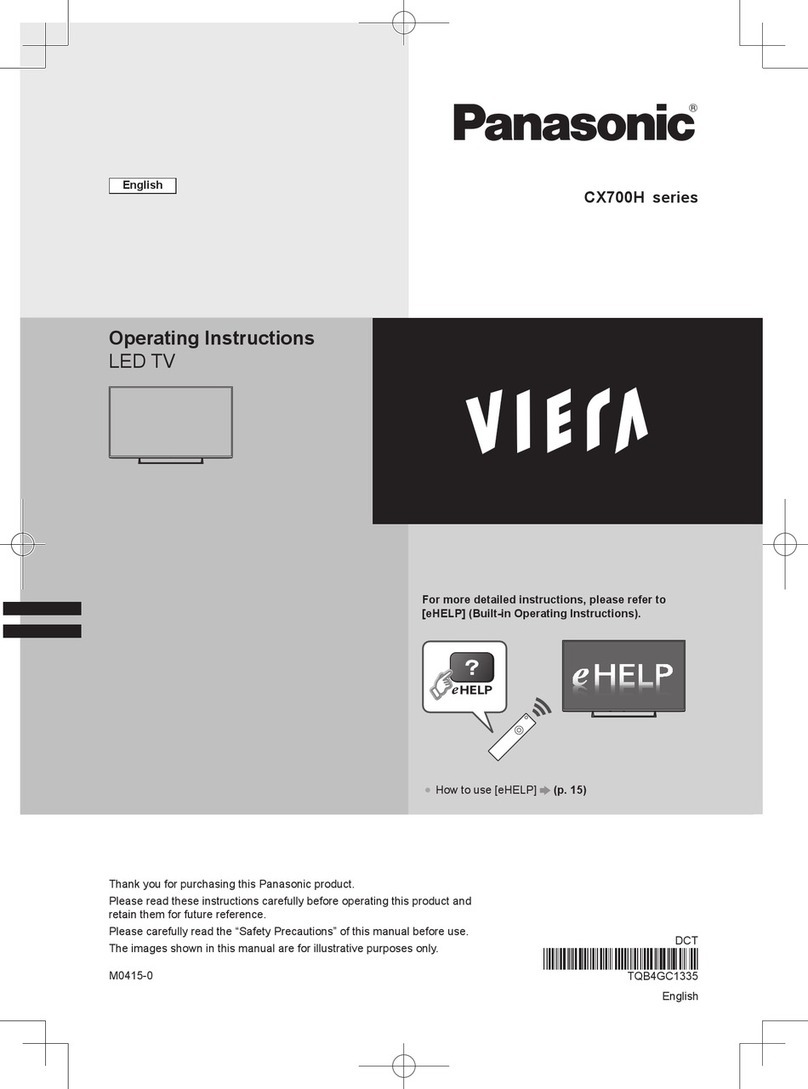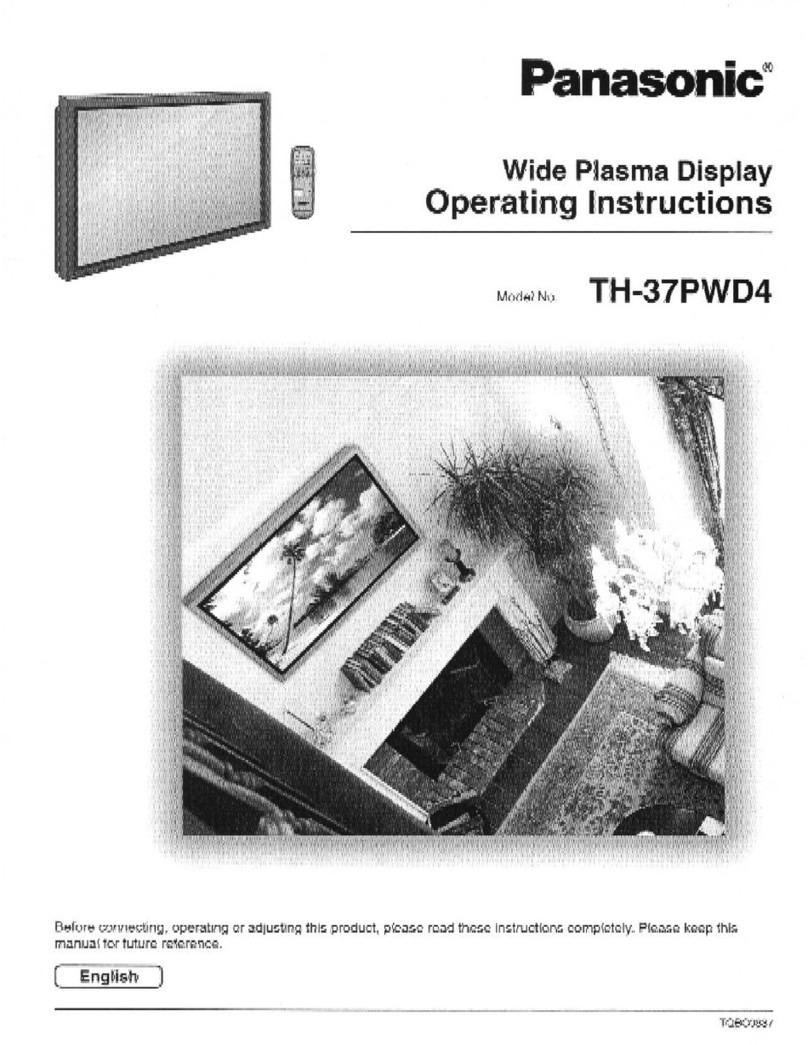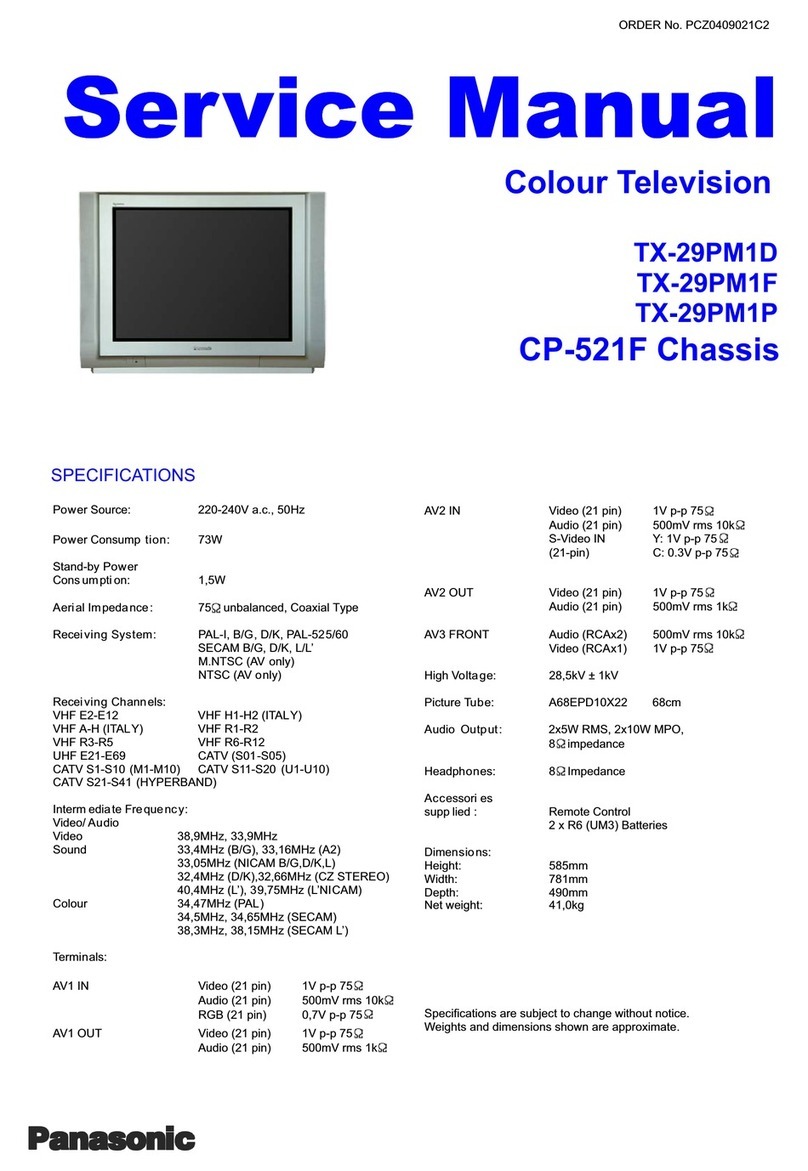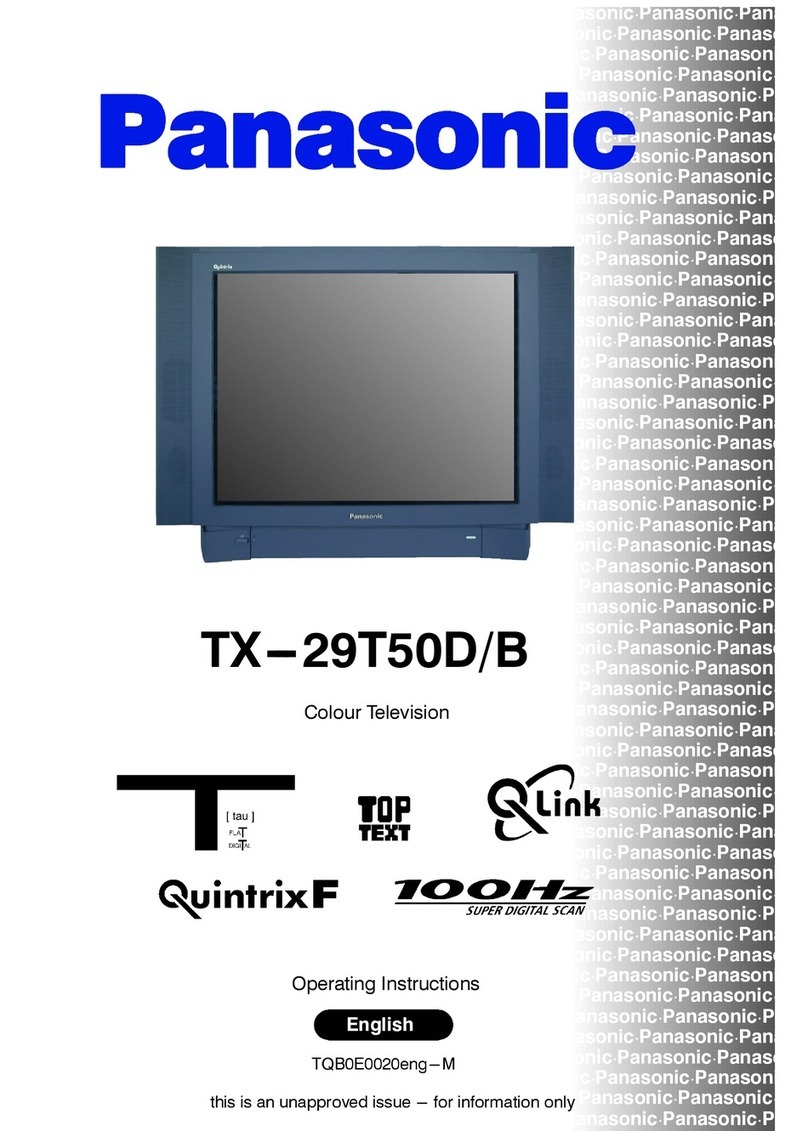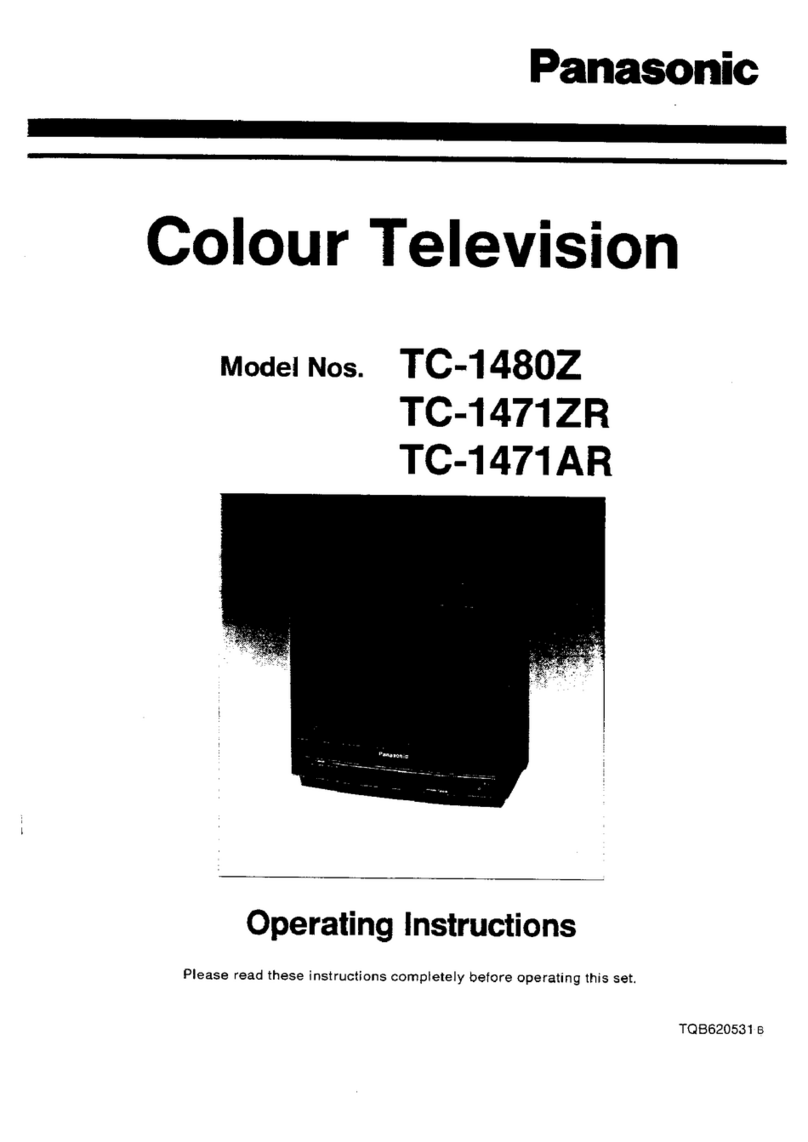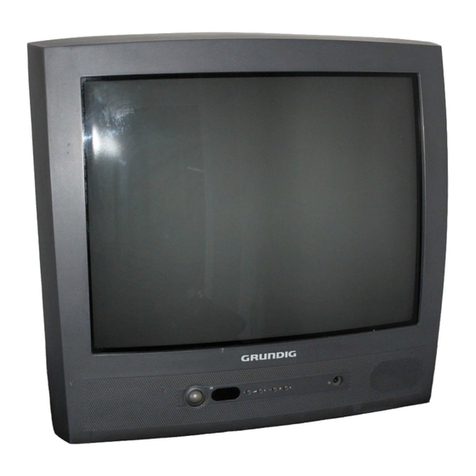- 2 -
TC-20KL03A / TC-29KL03A
General Guidelines
An Isolation Transformer should always be used during the servicing of a
receiver whose chassis is not isolated from the AC power line. Use a
transformer of ade uate power rating as this protects the technician from
accidents resulting in personal injury from electrical shocks. It will also
protect the Receiver from being damaged by accidental shorting that may
occur during servicing.
When servicing, observe the original lead dress, especially in the high
voltage circuit. Replace all damaged parts (also parts that show signs of
overheating.)
Always Replace Protective Devices, such as fishpaper, isolation resistors
and capacitors, and shields after servicing the Receiver. Use only
manufacturers recommended rating for fuses, circuit breakers, etc.
High potentials are present when this Receiver is operating. Operation of
the Receiver without the rear cover introduces danger from electrical shock.
Servicing should not be performed by anyone who is not thoroughly fami-
liar with the necessary precautions when servicing high-voltage e uipment.
Extreme care should be practiced when Handling the Picture Tube. Rough
handling may cause it to implode due to atmospheric pressure (14.7 lbs
per s . in). Do not sick or scratch the glass or subject it to any undue
pressure. When handling, use safety goggles and heavy gloves for
protection. Discharge the picture tube by shorting the anode to chassis
ground (not to the cabinet or to other mounting hardware). When
discharging, connect cold ground (i.e. dag ground lead) to the anode with
a well insulated wire or use a grounding probe.
Avoid prolonged exposure at close range to unshielded areas of the picture
tube to prevent exposure to X-ray radiation.
The Test Picture Tube used for servicing the chassis at the bench should
incorporate safety glass and magnetic shielding. The safety glass provides
shieldinf for the tube viewing area against X-ray radiation as well as
implosion. The magnetic shield limits X-ray radiation around the bell of the
picture tube in addition to restricting magnetic effects. When using a picture
tube test jig for service, ensure that the jig is capable of handling 31kV
without causing X-ray radiation.
Before returning a serviced receiver to the owner, the service technician
must thoroughly test the unit to ensure that is completely safe to operatore.
Do not use a line isolation transformer when testing.
Important Sa ety Notice
Special components are used in this television set which are important for safety. These parts are identified on the schematic
diagram by the symbol . It is essential that these critical parts are replaced whit the manufacturers specified replacement
parts to prevent X-ray radiation, shock, fire or other hazards. Do not modify the original design whitout manufacturers permission.
Warning !
It is essential that these critical parts are replaced with
the manufacturers specified replacement parts to pre-
vent X-ray radiation, shock, fire or other hazards.
Table o Contents
Operating Instructions ........................................................................... 04
Feature Summary ................................................................................... 05
The DAC Control Functions and Adjustments for MX5ZB .................... 06
SERVICE MODE:
CHK1 - Options ................................................................................ 06
CHK2 - VCJ Adjustments ................................................................ 07
CHK3 - Pincushion Adjustments ..................................................... 07
CHK4 - White Balance Adjustments ............................................... 07
CHK5 - Stereo Adjustments ........................................................... 07
ADJUSTMENTS:
TEST AND MEASUREMENT EQUIPMENTS ........................................ 08
1- RF AGC CALIBRATION .............................................................. 09
2- VIF DETECTOR OUTPUT LEVEL CONFIRMATION ................ 09
3- BUZZING CONFIRMATION (AUDIO CIRCUIT) ......................... 09
4- ANODE AND HEATER VOLTAGE CONFIRMATION ............... 09
5- PAL COLOR OUTPUT LEVEL ADJUSTMENT ............................ 10
6- NTSC SUB-TINT CALIBRATION ................................................... 10
7- MTS CALIBRATION ........................................................................ 10
8- STEREO SEPARATING ADJUSTMENT ..................................... 11
9- PROTECTION CIRCUIT (SHUTDOWN) OPERATION .............. 11
10- FOCUS CALIBRATION ............................................................. 11
11- VERTICAL DEFLECTION CALIBRATION .................................. 12
12- CRT CUT OFF CALIBRATION ................................................. 12
EEPROM MEMORY MAPS ....................................................................... 13
SCHEMATICS DIAGRAMS:
CRT BOARD (L) ........................................................................................ 15
DVD CONECTION BOARD (D) ................................................................ 16
AV FRONTAL BOARD (G) ....................................................................... 17
REMOTE CONTROL RECEIVER (R) ...................................................... 17
MAI BOARD:
Power Supply ........................................................................................... 18
Microprocessor / YUV / Syntony ............................................................ 20
Audio Signal Process .............................................................................. 22
Vertical / Horizontal Process .................................................................. 24
Audio Output ............................................................................................ 26
CIRCUIT BOARD LAYOUT ....................................................................... 28
IC601 - Voltage and Description ............................................................... 30
IC601 - Layout ............................................................................................ 31
IC2201 - Voltage Table .............................................................................. 31
Signal Waveform ........................................................................................ 32
Exploded View ........................................................................................ 34
Mechanical Replacement Parts List ....................................................... 35
Electrical Replacement Parts List .......................................................... 36

